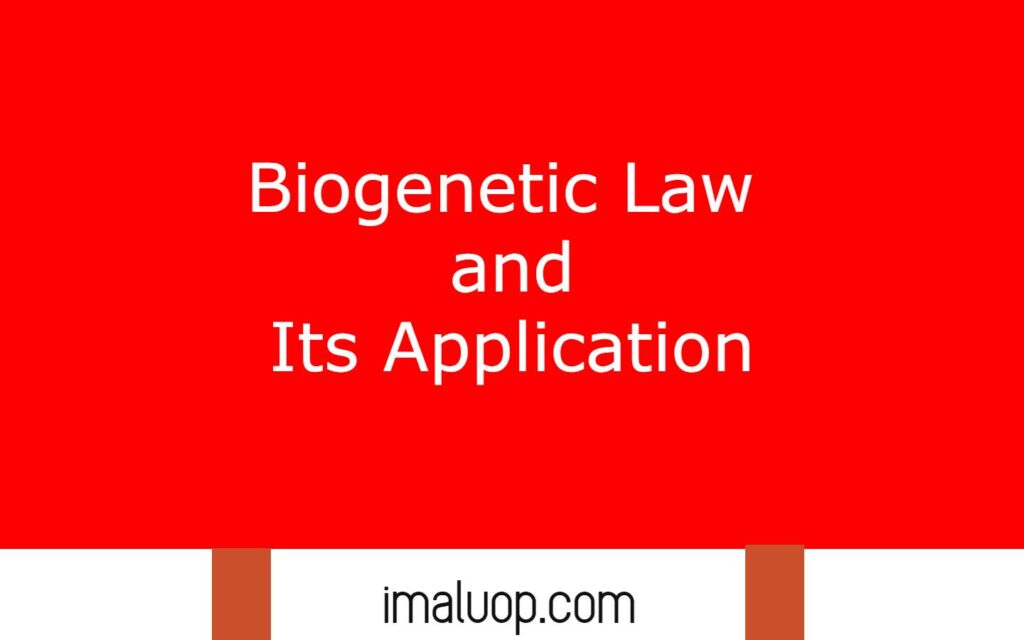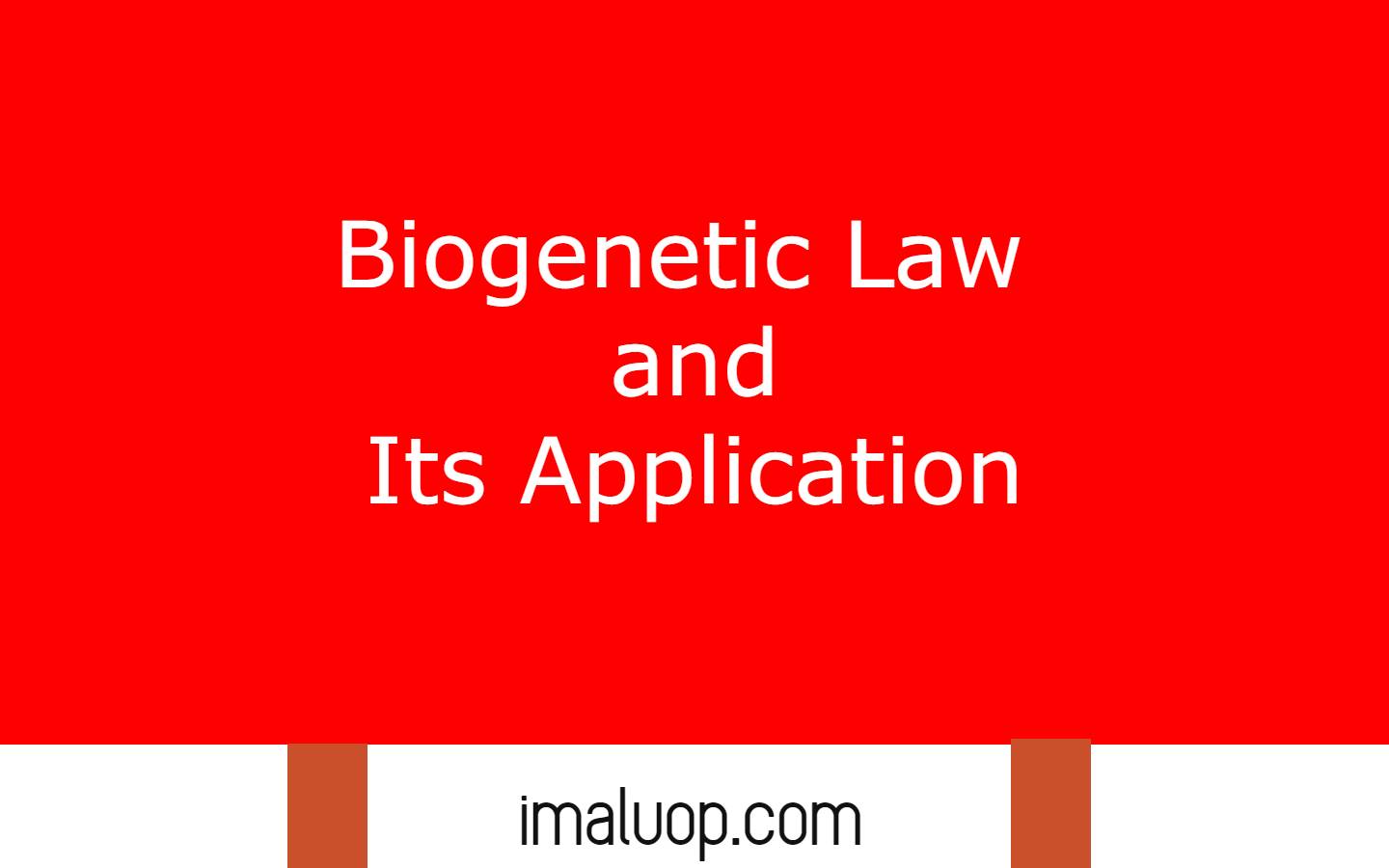Hi today we are going to a rule called biogenetic law and its application which is based upon the theory of Darwin and it relates between different organisms and their life history.
What is Biogenetic Law:
The biogenetic law was proposed by Ernst Haeckel and the law is also known as the theory of recapitulation which has a great influence on The Theory Of Evolution of Darwin. If we go to our evolutionary history then we will find that the advanced organisms present on our earth today were not present from the beginning as they evolved with time and today advanced organisms are all results of the evolution.
There are different types of evidence present in our earth which point the evolutionary history of different organism like fossil we find in sedimentary rocks show the timeline of evolution in which simpler organisms evolve into more and more advanced organisms which makes the scientists able to draw picture of different part of the evolutionary history and when we arrange the different parts we get whole picture of the evolutionary history.
There are different types of evidence and one of them is embryonic development evidence which shows different embryonic development stages similar to different ancestors of an organism.
The Biogenetic Law say that we can see different ancestral form of a organisms in the embryonic development of the organism so we can know about the ancestor of the organism, for example in embryonic development of human we will notice different stages which are resemble to the ancestor of human beings and they are arranged in the timeline of the evolutionary history.
In embryonic development different stages are in chronological order which matches with other evidence which shows the timeline of evolution in the past. The embryonic development shows that numerous organisms have common ancestry because they pass through the same stage in their individual embryonic stage.
Haeckel was greatly influenced by the theory of Darwin and then he started to research and he found similarities in embryonic development stage in different organisms so he started to gather more information in embryonic development of different organisms.
He started to observe all embryonic stages of some organisms and draw them and he noticed that the animals who are closely related in evolution passed through similar embryonic stages and his drawing also showed it.
So it was assumed that the common ancestry is also reflected in embryonic development but later on many objections came against the biogenetic law because there were also some differences among the embryonic stage of different related animals.
What is Phylogeny:
It is an evolutionary history which shows us the evolution of different complex organisms from simple organisms during the evolution and scientists show them in a tree like fashion which shows evolutionary history of different taxa.
Evolutionary trees give branches to the dissimilar animals and the branches are joined to a place where they show common features and at a time they all join to a common point which suggests their common ancestry.
What is Ontogeny:
Now ontogeny gives importance on the life history of a species which starts from the fertilization and end upto the maturation of the individual organism and its development and according to biogenetic law, phylogeny is reflected in embryonic stage of a species.

So the whole evolutionary history of different taxa or phylogeny is visible in different embryonic stages of an organism which gives us stronger evidence for common ancestry of different organisms from a single species.
If we combine both ontogeny and phylogeny then we get a clear picture of evolution on our earth in which with time the complex organisms develop from simple organisms.
Read More: Characteristics of Benthic Zone
Hi Everyone!!! Welcome to Imaluop. Imaluop always try to learn some new and he want to share to other people. Here we will try to learn various topics on Science, specially on Biological Sciences.
